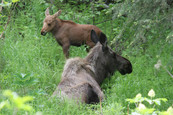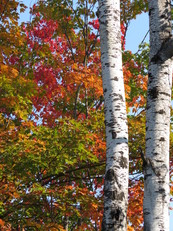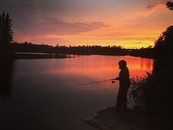Sprigs of scientific discoveries for natural resources managers
|
|
|
Volume 1 - October 2019
About the Minnesota Research Reader
The Minnesota Research Reader is a new collaboration between the Minnesota Department of Natural Resources and the USDA Forest Service. As natural resource managers, we know that you’re interested in current science but it takes time to sort through all the research out there. The 'Reader' is intended to provide a quick look at some of the emerging research relevant to our work in the State of Minnesota. Each issue will have a topical theme, highlighting four articles and their management implications. When possible, we will also spotlight priority projects and initiatives from our agencies as a way to increase collaboration and knowledge exchange. This periodic digest will be distributed on a flexible schedule based on research content, and our dedicated editorial review board's availability. Enjoy this inaugural issue showcasing a diverse array of research. Happy reading!

The moose population in northeastern Minnesota has declined 65 percent from 2006 to 2018 but has recently begun to stabilize. In this article (coauthored by Glenn DelGiudice from the Minnesota DNR), researchers investigate production, survival and cause-specific mortality of moose calves to get to the bottom of why this decline is happening.
Management Implications:
- In Northeast Minnesota, it is unclear if predator reduction would result in overall population growth of moose.
- Identifying specific causes of calf mortality and understanding their relations to various landscape characteristics is important, to understand the mechanisms contributing to the declining population.
- Besides wolves, the other major predator of calves that could possibly be managed at lower densities is the black bear.
|

Some of the greatest opportunities for carbon mitigation on natural and working lands fall within the scope of the Minnesota DNR’s and U.S. Forest Service’s work as managers of millions of acres of public land in Minnesota. In this article, the authors quantify the potential of Natural Climate Solutions (NCS) to increase carbon storage and avoid greenhouse gas emissions. They found that NCS activities like reforestation and use of sustainable forest management practices are a meaningful way to store and sequester carbon and work toward limiting climate warming to <2°C. To learn more about Minnesota’s incredible potential to contribute to NCS, visit nature4climate and select the US State Mapper.
Management Implications:
- Forested lands play an integral role in NCS. Activities like reforestation, natural forest management and avoided forest conversion directly contribute to the carbon sequestration efforts needed to avoid the most catastrophic effects of climate change.
- Implementing NCS on public lands can help agencies meet other mission-oriented goals: air and water filtration, flood control, improved soil health, wildlife habitat and other climate-resilient benefits.
-
Minnesota can tap into the power of nature to sequester an additional 27 million tons of CO2 annually, above and beyond business as usual, if we invest in a dozen or so practices on natural and working lands.
|

This study (coauthored by Kristen Hall from the Minnesota DNR) looked at what scale is most helpful in trying to understand species-habitat relationships for wetland restoration and wetland breeding birds in Minnesota. They found that having more wetlands was associated with more wetland breeding birds but some species seemed to be particularly sensitive to anthropogenic land use, such as agriculture, in the surrounding matrix.
Management Implications:
- Shift wetland conservation planning from site scale to landscape scale.
- Restoring wetlands in the Prairie Pothole Region is likely to maintain wetland bird diversity.
- Focusing wetland protection efforts in the Aspen Parkland and Boreal ecoregions of the state is a cost-effective way to provide habitat for species sensitive to agriculture.
|

Minnesota offers endless recreation opportunities through our state parks and national forests, and these areas often intersect with ongoing, large-scale restoration efforts. This investigation of the Great Lakes region illustrates how cultural ecosystem services (CES) such as sport fishing, recreational boating, birding, beach use and park visitation interact with environmental stressors to inform large-scale restoration programs.
Management Implications:
- CES activities correlate with tourism gross domestic product, indicating these recreation opportunities benefit local economies.
- Areas with high CES delivery often are severely affected by environmental stressors, suggesting either the ecosystem or human enjoyment of the activity is highly resilient.
|
|
|
|
Photo credits from top to bottom: US Fish and Wildlife, USDA Forest Service, US Fish and Wildlife, Minnesota Department of Natural Resources
|
|
Please sign up for future editions and feel free to share with others!
Subscribe to the newsletter.
|
|